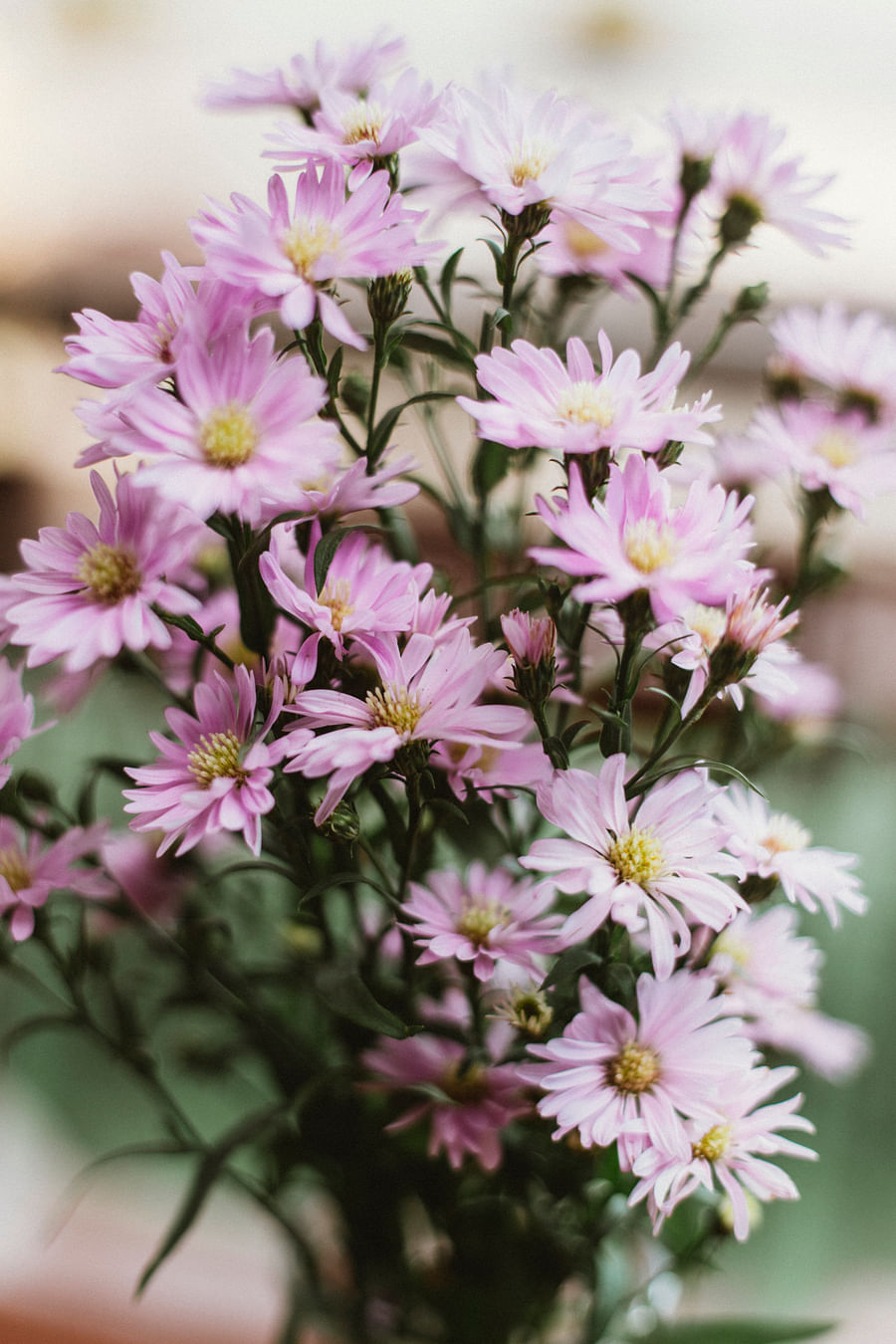Perennial Plant Care Tips: A Season-by-Season Guide to Keeping Your Garden Thriving

.subheading {
font-size: 24px;
font-weight: bold;
margin-bottom: 10px;
}
img {
max-width: 100%;
height: auto;
margin-bottom: 20px;
}
Welcome to the world of perennial plant care! As a landscape designer, I've had the pleasure of working with a wide variety of perennial plants, and I'm excited to share my knowledge with you. In this blog post, we'll explore a season-by-season guide to keeping your garden thriving, ensuring that your perennials remain healthy and beautiful throughout the year. We'll also provide expert advice on creating a colorful, long-lasting perennial garden.

In this comprehensive guide, we'll cover essential care tips for each season, from spring's awakening to winter's dormancy. We'll also discuss common perennial plant problems and solutions, ensuring that you're well-equipped to handle any challenges that may arise. By following these tips, you'll be able to create a stunning perennial garden that will be the envy of your neighbors and a source of pride for years to come. You can also consider planting long-lived perennials for a low-maintenance garden that will thrive for years.
So, without further ado, let's dive into our season-by-season guide to perennial plant care. We'll start with Spring Perennial Plant Care Tips, including advice on how to transplant bleeding hearts and divide a bleeding heart plant.
Spring is the season of renewal and growth, and it's the perfect time to get your perennial garden off to a great start. Here are some tips to help you care for your perennials in the spring:
Clean up your garden beds: Remove any dead leaves, branches, or debris that accumulated over the winter. This will help prevent disease and pests from taking hold in your garden.
Divide and transplant: Spring is the best time to divide and transplant your perennials. This will help keep them healthy and vigorous, and it's a great way to propagate your plants.
Fertilize: Give your perennials a boost of nutrients by fertilizing them in the spring. Use a slow-release fertilizer that will provide nutrients over time.
Water: Make sure your perennials are getting enough water in the spring. They may need more water than usual as they start to grow and develop new roots. If your garden is in a wet area, consider choosing plants that thrive in moist and soggy conditions.
Prune: Prune any dead or damaged branches from your perennials in the spring. This will help promote new growth and keep your plants looking healthy.
Protect from pests: Keep an eye out for pests like aphids and slugs in the spring. Use natural pest control methods like companion planting and insecticidal soap to keep them at bay.
Monitor for disease: Look for signs of disease like powdery mildew and rust in the spring. Remove any infected leaves or plants to prevent the disease from spreading.
By following these spring perennial plant care tips, you'll be well on your way to a beautiful and healthy garden.

As the temperatures rise and the days become longer, your perennial garden enters the peak of its growth and beauty. In this section, we'll explore Summer Perennial Plant Care Tips to ensure your garden remains vibrant and healthy throughout the season. This includes understanding how to pair your perennials for a stunning display, which you can learn more about in our article on perfect perennial pairings.
1. Watering
During the summer months, it's crucial to provide your perennials with adequate water. The general rule of thumb is to water your plants deeply and infrequently, allowing the soil to dry out slightly between waterings. This encourages the development of deep, healthy root systems. Be sure to water early in the morning or late in the evening to minimize evaporation.
2. Mulching
Mulching is an essential summer care tip for perennials. A layer of organic mulch, such as shredded bark or compost, helps to conserve moisture, suppress weeds, and regulate soil temperature. Apply a 2-3 inch layer of mulch around the base of your plants, taking care not to cover the crown of the plant.
3. Deadheading and Pruning
Regularly removing spent blooms, or deadheading, encourages perennials to produce more flowers and prevents the plant from setting seed. This practice not only keeps your garden looking tidy but also promotes continuous blooming. For instance, balloon flowers (Platycodon) can greatly benefit from this practice. Learn more about these flowers in our article on the versatility of Platycodon. Additionally, some perennials may require light pruning during the summer to maintain their shape and encourage new growth.
4. Pest and Disease Control
Summer is the prime time for pests and diseases to attack your perennials. Regularly inspect your plants for signs of infestation or illness, and take prompt action to address any issues. Employ organic or chemical controls as needed, and always follow the label instructions for proper application.
5. Fertilizing
While many perennials don't require heavy fertilization, a light application of a balanced, slow-release fertilizer in early summer can provide a boost for your plants. Be sure to follow the manufacturer's recommendations for application rates and timing.
By following these Summer Perennial Plant Care Tips, you'll be well on your way to maintaining a thriving, beautiful garden throughout the season. For example, incorporating Easter Lilies into your garden can add a classic touch. Learn more about this in our article on whether Easter Lilies are perennials. Remember to enjoy the fruits of your labor and take time to appreciate the stunning blooms and lush foliage your perennials provide.
As the vibrant colors of autumn begin to emerge, it's essential to give your perennial garden the attention it needs to prepare for the colder months ahead. In this section, we'll explore some Fall Perennial Plant Care Tips to ensure your garden remains healthy and thriving, attracting birds and butterflies. Check out our guides on what plants attract birds to your garden and creating a butterfly-friendly garden for more information.
1. Prune and deadhead: Fall is the perfect time to trim back any dead or damaged foliage, as well as remove spent blooms. This not only keeps your garden looking tidy but also helps prevent the spread of diseases and pests. Be sure to use clean, sharp tools to make clean cuts and avoid damaging your plants.
2. Divide and transplant: As perennial plants grow, they can become overcrowded and compete for resources. Fall is an ideal time to divide and transplant perennials, giving them more space to grow and ensuring they receive adequate nutrients. Be sure to water your transplants well to help them establish in their new location.

3. Apply mulch: Adding a layer of organic mulch, such as shredded leaves or compost, around your perennials can help insulate their roots from the cold, retain moisture, and suppress weeds. Aim for a 2-3 inch layer, taking care not to cover the crown of the plant, as this can lead to rot.
4. Water wisely: While it's important to keep your perennials well-watered during the fall, be mindful not to overwater, as this can cause root rot. Water deeply and less frequently, allowing the soil to dry out slightly between waterings.
5. Protect tender perennials: Some perennials may require extra protection from harsh winter weather. Consider using frost blankets or cloches to shield delicate plants, and be prepared to move potted perennials to a more sheltered location if necessary.
By following these Fall Perennial Plant Care Tips, you'll be well on your way to maintaining a healthy and beautiful garden throughout the autumn season and beyond. In the next section, we'll discuss how to care for your perennials during the winter months.
As the cold season approaches, it's essential to prepare your perennial garden for the winter months. While many long-lived perennials are hardy and can withstand frost, others may need extra care to ensure they survive and thrive come spring. In this section, we'll discuss Winter Perennial Plant Care Tips to help you maintain a healthy and beautiful garden throughout the chilly season.
1. Mulching: One of the most important winter care tips for perennials is to apply a layer of mulch around the base of your plants. This will help insulate the soil, protect plant roots from freezing temperatures, and conserve moisture. Use organic materials like shredded leaves, straw, or bark chips for the best results.

2. Pruning: In late fall or early winter, it's a good idea to prune back any dead or damaged foliage on your perennials. This will help prevent disease and pests from overwintering in your garden. However, be cautious not to prune too early, as some perennials, like ornamental grasses, can provide winter interest and habitat for beneficial insects.

3. Protecting tender perennials: Some perennials, like certain varieties of lavender and rosemary, may need extra protection in colder climates. To shield these plants from harsh winter conditions, cover them with a layer of frost cloth or burlap. Alternatively, you can move potted perennials to a sheltered location, such as a garage or greenhouse.

4. Watering: While it's essential to reduce watering during winter, don't let your perennials become too dry. Water your plants sparingly, ensuring the soil remains moist but not waterlogged. Be mindful of the weather, as heavy rainfall or snow may provide enough moisture for your garden.
Remember, winter care for your perennial garden is crucial to ensure a healthy and vibrant display come spring. By following these Winter Perennial Plant Care Tips, you'll be well on your way to maintaining a thriving garden all year round.
Despite your best efforts, sometimes perennial plants can still encounter problems. Here are some common issues and solutions to help keep your garden thriving:
Problem: Pests and Diseases
Solution: Keep an eye out for any signs of pests or diseases, such as yellowing leaves or spots on the foliage. Remove any affected leaves or plants immediately. Consider using organic pest control methods, such as neem oil or insecticidal soap. Make sure to also practice good garden hygiene by cleaning up any fallen leaves or debris. For more detailed information on dealing with pests and diseases in your perennial garden, check out our guide on proper perennial care and maintenance.
Problem: Overcrowding
Solution: Perennial plants can quickly become overcrowded, leading to stunted growth and poor flowering. Divide your plants every few years to keep them healthy and vigorous. For example, you can learn how to divide a bleeding heart plant in our step-by-step guide. Make sure to also give your plants enough space to grow by following the recommended spacing guidelines.
Problem: Poor Soil Quality
Solution: Perennial plants require well-draining soil with plenty of organic matter. If your soil is poor quality, consider amending it with compost or other organic matter. You can also add fertilizer to help provide your plants with the nutrients they need. If you're dealing with wet areas in your garden, you might find our article on top perennial plants for moist and soggy conditions helpful.
Problem: Improper Watering
Solution: Overwatering or underwatering can both be detrimental to perennial plants. Make sure to water your plants deeply and infrequently, rather than giving them frequent shallow waterings. Consider using a drip irrigation system to help ensure your plants receive consistent moisture. For more tips on creating a beautiful perennial garden, check out our article on achieving a continuous bloom.
By being aware of these common problems and solutions, you can help keep your perennial garden healthy and thriving year-round.

Yellowing leaves on a perennial plant can be a sign of pests or diseases. Remove any affected leaves or plants immediately.
Specific examples and case studies for each season to illustrate the care tips for perennial plants:
1. Spring Perennial Plant Care Tips:
Example 1: Dividing and Propagating Hostas
In early spring, divide and propagate your mature hosta plants. For example, if you have a large clump of hostas that has become overcrowded, carefully dig up the clump and separate the individual plants. Replant the divisions in well-amended soil with good drainage. Water them regularly until they establish themselves. This process not only rejuvenates the plants but also allows you to expand your hosta collection or share them with friends.
Example 2: Deadheading Daffodils
After daffodils have finished blooming in spring, remove the spent flowers by deadheading them. This prevents the plant from wasting energy on seed production and encourages stronger bulb development for the following year. Simply snip off the faded flower heads, but leave the foliage intact until it turns yellow and withers naturally. This way, the plant can store energy for future growth.
2. Summer Perennial Plant Care Tips:
Example 1: Watering Delphiniums during Heatwaves
During hot summer days, delphiniums can be vulnerable to wilting. For instance, if you live in a region with intense heat waves, provide extra care to your delphiniums. Ensure they receive adequate water, especially during extended dry periods. Consider using a drip irrigation system or soaker hoses to deliver water directly to the root zone and avoid wetting the foliage, which can promote diseases.
Example 2: Supporting Heavy-Flowering Peonies
In the middle of summer, peonies might become top-heavy due to the weight of their large, showy flowers. To prevent their stems from bending or breaking, use plant supports or stakes. Place the supports around the plants early in the growing season, so the stems can grow through them naturally. This ensures the peonies maintain an upright appearance and remain intact throughout their blooming period.
3. Fall Perennial Plant Care Tips:
Example 1: Cutting Back and Mulching Perennials
As fall approaches, prepare your perennial beds for winter by cutting back certain plants. For example, trim back the spent foliage of herbaceous perennials like daylilies and hostas, leaving about 2 to 3 inches above the ground. Mulch the plants with a layer of organic material like straw or shredded leaves. This helps insulate the soil and protects the plant's roots from frost and freezing temperatures during winter.
Example 2: Planting Fall-Blooming Perennials
Take advantage of fall-blooming perennials to add late-season color to your garden. For instance, consider planting asters or chrysanthemums, which provide vibrant blooms well into the autumn months. Ensure these new additions receive enough water to establish themselves before winter arrives.
4. Winter Perennial Plant Care Tips:
Example 1: Applying Winter Mulch
In regions with harsh winters, apply an additional layer of winter mulch over perennial beds once the ground freezes. Use materials like straw, evergreen boughs, or wood chips to insulate the plants further from extreme temperatures. This extra layer of protection can prevent frost heaving and damage to the plant's roots.
Example 2: Avoiding Overwatering
During the winter, perennial plants are generally dormant, and their water requirements are significantly reduced. Overwatering during this period can lead to root rot and other water-related issues. Check the soil moisture before watering and only provide water if the soil feels dry. Be especially cautious with container-grown perennials, as they tend to dry out faster than those planted in the ground.
These examples and case studies should provide you with practical illustrations of how to care for perennial plants throughout the different seasons of the year. Always keep in mind that specific care needs can vary depending on the types of perennials you have and your local climate conditions.
Caring for your perennial plants throughout the year is essential for maintaining a thriving and beautiful garden. By following the season-by-season guide provided in this blog post, you can ensure that your perennials remain healthy and vibrant all year round. Remember that each plant is unique and may require specific care, so always research the needs of your specific perennials to provide the best possible environment for them to flourish.
Consistency is key when it comes to perennial plant care. By establishing a routine and staying attentive to your garden's needs, you can prevent many common problems and keep your plants in optimal condition. Don't forget to monitor your garden regularly for signs of pests, diseases, or other issues, and address them promptly to prevent further damage.
Spring Perennial Plant Care Tips:
- Divide and propagate mature plants like hostas to rejuvenate them and expand your collection.
- Deadhead faded flowers like daffodils to redirect the plant's energy towards bulb development.
- Spring is a time for rejuvenation and preparing plants for the growing season ahead.
Summer Perennial Plant Care Tips:
- Provide adequate water, especially during hot summer days, to prevent wilting and stress in plants like delphiniums.
- Support top-heavy flowering plants, such as peonies, with stakes or plant supports to maintain an upright appearance.
- Summer care focuses on maintaining healthy growth and managing the challenges of heat.
Fall Perennial Plant Care Tips:
- Cut back certain perennials and mulch the beds to prepare for winter and protect the roots from freezing temperatures.
- Take advantage of fall-blooming perennials to add late-season color to the garden.
- Fall care revolves around preparing plants for dormancy and enhancing the garden's aesthetics.
Winter Perennial Plant Care Tips:
- Apply winter mulch to insulate plants and prevent frost heaving during harsh winters.
- Reduce watering significantly during the dormant winter period to avoid water-related issues.
- Winter care aims to protect plants from extreme cold and minimize their maintenance needs.
Remember that each perennial species might have unique care requirements, so it's essential to research specific plants in your garden to provide them with the best care throughout the year. Adjusting your care practices based on the local climate and individual plant needs will help ensure the long-term health and beauty of your perennial garden.
Lastly, don't be afraid to experiment and learn from your experiences. Gardening is a continuous learning process, and the more you work with your perennials, the more you'll understand their unique needs and preferences. Embrace the challenges and joys of perennial gardening, and you'll be rewarded with a stunning, ever-changing landscape that brings you pleasure year after year.
Happy gardening!

Post a comment